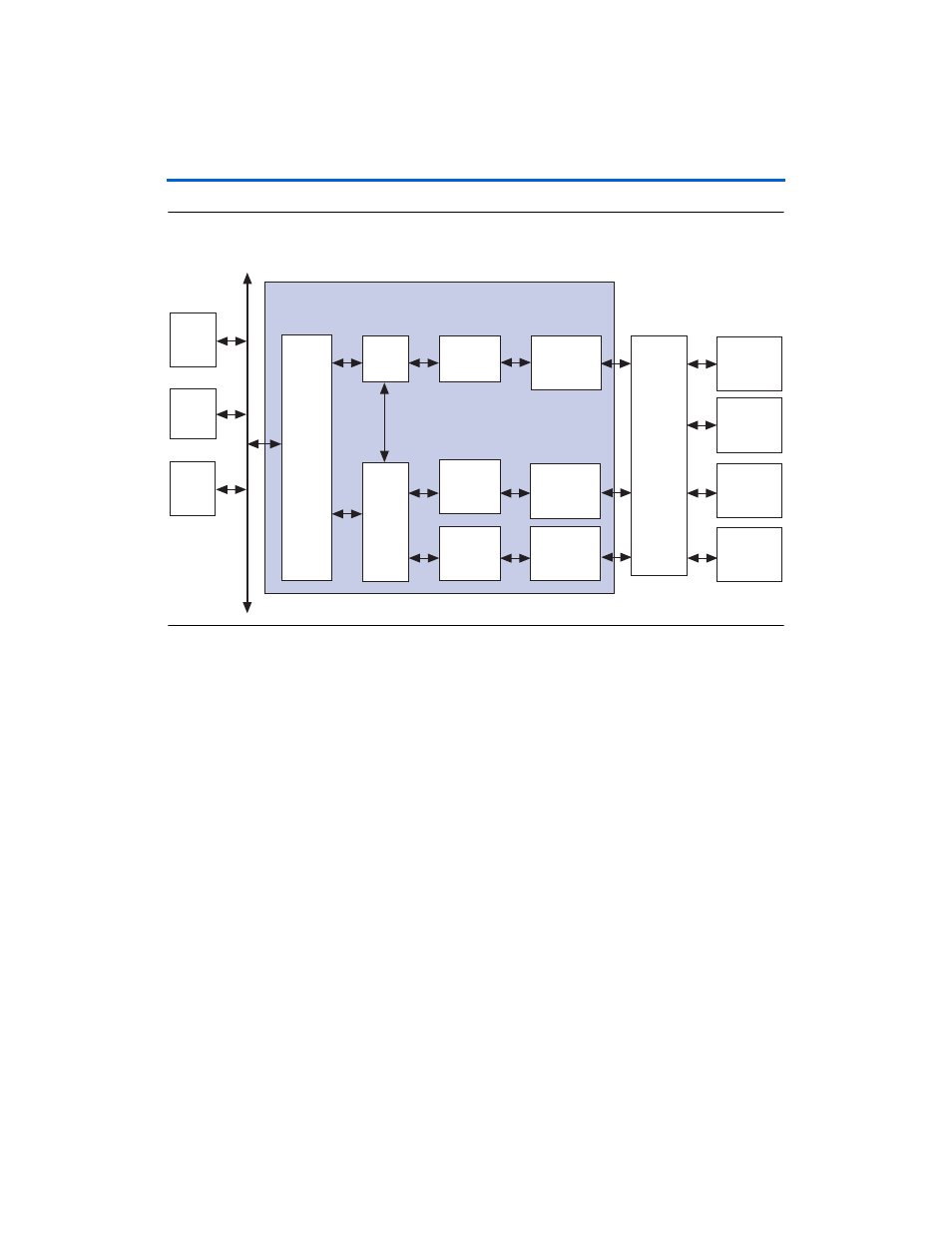Control register access avalon slave, Figure 7–4, Pci host-bridge device mode – Altera PCI Compiler User Manual
Page 277

Altera Corporation
User Guide Version 11.1
7–9
October 2011
Functional Description
Figure 7–4. PCI-Avalon Bridge Block Diagram Managing the PCI Master/Target Peripheral Mode
You can customize the Master/Target mode by specifying one of the
performance profiles. Refer to
“Performance Profiles” on page 7–11
.
Control Register Access Avalon Slave
The PCI-Avalon bridge provides a rich set of user-accessible
control/status registers. Implementing the registers is optional except
when using the:
■
PCI Host-Bridge Device mode
■
Dynamic Avalon-to-PCI address translation option
The Avalon Configuration tab of the PCI Compiler wizard allows you to
enable the control/status registers and specify access to them via the
interconnect. Refer to
“Avalon Configuration” on page 6–16
.
The control/status registers can be accessed from any Avalon-MM
master device including PCI-Avalon bridge master ports. If you want to
access the control/status registers from a PCI bus master device, you
must use the SOPC Builder GUI to connect the Avalon-MM ports to the
Control Register Access Avalon Slave
port. Refer to
.
PCI-Avalon Bridge
Master/Target Peripheral Mode
PCI
MegaCore
Function
PCI
Target
Controller
Non-
Prefetchable
Avalon
Master
Host
Processor
PCI
Master/
Target
Device
PCI
Bus
Arbiter
Prefetchable
Avalon
Master
PCI
Prefetchable
Bridge
Logic
PCI
Non-
Prefetchable
Bridge Logic
PCI
Bus
PCI
Master
Controller
Master
Bridge
Logic
PCI Bus
Access
Avalon Slave
Master
Peripheral
Master
Peripheral
Slave
Peripheral
Slave
Peripheral
System
Interconnect
Fabric
